#bobbit worm
Text

YEAR OF THE DRAGON
5K notes
·
View notes
Text


My bobbit worm Fakemon :)
Babbit is based off of the larvae and Annihilid is the adult worm!
#fakemon#pokemon#bobbit worm#Eunice aphroditois#polychaete#babbit = baby + rabbit + bobbit#annihilid = annihilate + annelid#mine
771 notes
·
View notes
Text
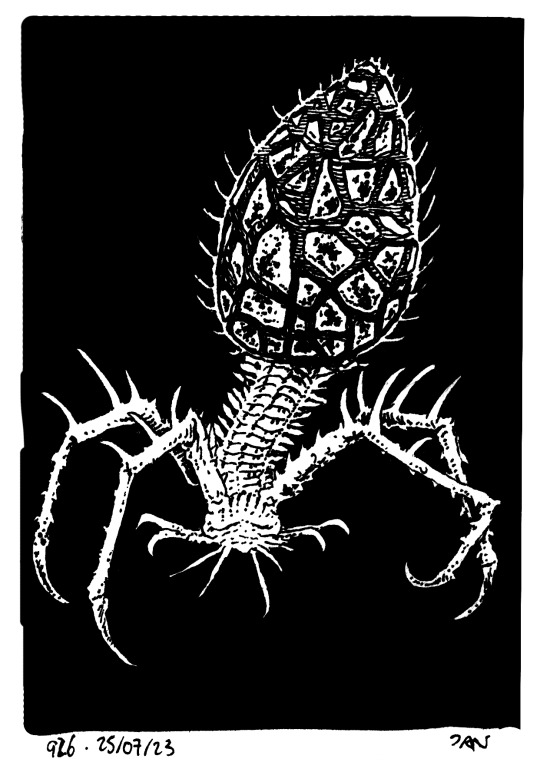
#based on a bacteriophage virus#virus#pseudofauna#i guess ???#spider#spider crab#bobbit worm#worm#bug#creature design#chimera#bestiary#monster#ink#926#octem 116#aqva 4#the Unknown
232 notes
·
View notes
Text
There are some animals that, if they didn't exist and somebody made them up, we would say they had an overactive imagination. The bobbit worm is one of those creatures, the closest we have to a real-life Mongolian death worm. So for this Wet Beast Wednesday, I'll tell you about just how weird it is.
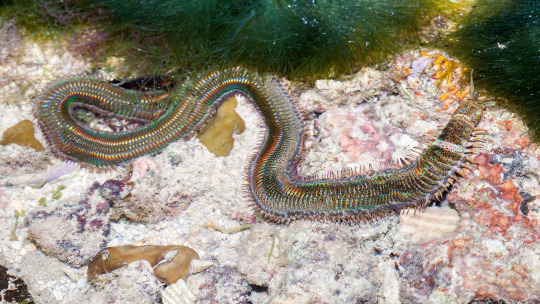
(image: a rare full-body shot of a bobbit worm)
Before we start, I want to go on a brief tangent. What exactly is a worm? Well it turns out that like fish, worms aren't real. At least they aren't from a taxonomist's perspective. In common parlance, we refer to any long, skinny, and (usually) legless invertebrate as a worm. In taxonomy, that is far too broad of a category, especially as lots of animal lineages would have started out as something a lot like a worm and you can't stop being what your evolutionary ancestors were. Instead, taxonomists classify worms into multiple distinct phyla that independently converged onto the worm body plan, including the platyhelminths, nematodes, nemerteans, and annelids. The bobbit worm (Eunice aphroditos) is an annelid, which are known for their multiple body segments. More specifically, it is a polychaete or bristle worm, which are known for having a pair of fleshy protrusions called parapodia on each body segment, which have chitinous bristles called chaetae growing from them. There is some debate that the bobbit worm may actually be a species complex, which is when multiple related species are mistakenly classified as a single species.
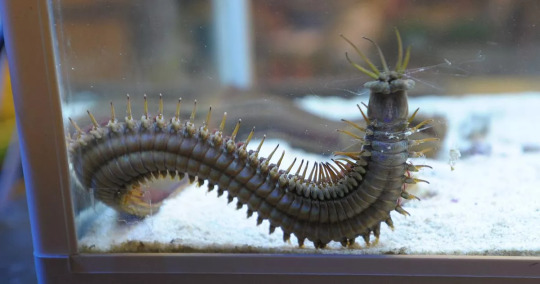
(image: a bobbit worm found in an aquarium)
Bobbit worms are the largest of the polychaetes, with the largest known specimen being 299 cm (9.81 ft) long. They are also rather skinny, usually reaching no more than 2.5 cm (1 in) wide. Bobbit worms have a wide range of coloration, ranging from brown to black and often with a rainbow of other colors going down their bodies. You might not notice this, however, because they spend most of their time burrowing under the sand in their Indo-Pacific coral reef habitats. This provides protection from predators and is important to their hunting strategy. Bobbit worms will stick their heads out of the sand and wait while their 5 antennae use chemosensitive and light-sensing cells to detect when fish pass by. When a fish comes too close, the worm strikes. They use a set of retractable jaws that are razor sharp and come together like scissors to bite the fish. This bit is strong enough to cut small fish in half. It is rumored that this is the source of their name, from the Lorena Bobbit case. I will not elaborate further, google it if you don't know. Those fish that are not killed immediately will find themselves bleeding out and paralyzed from venom injected through the jaws as they are dragged into the worm's burrow to be eaten. There are some reports that the wom's chaetae are also venomous and that handling them barehanded can cause permenent numbness, but this does not appear to be the scientific consensus. The worms will also feed on seaweed and other algae, making them omnivorous.
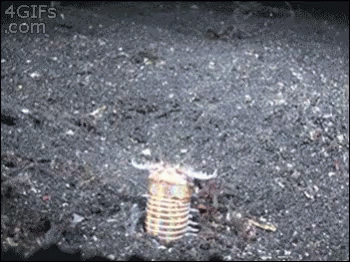
(gif: a bobbit worm catching a fish)
The borrows made by bobbit worms are dug out of the sediment and coated with mucus. The worm uses its chaetae to move in and out of the burrow. The mucus if filled with nutrients that bacteria, particularly sulfate-reducing bacteria, absolutely love. This allows iron sulfides to accumulate in the mucus. When exposed to oxygen in the water, usually at the opening of the burrow, the sulfides will become iron hydroxides. These help reinforce the burrow's opening. Bobbit worms rarely leave their burrows and will retreat at the first sign of danger, making it very hard to spot them in the wild. Several fossilized burrows have been found, one dating to 20 million years ago. Another burrow of a similar animal, possibly an ancient relative of the bobbits, was found dating to 400 millions years ago.
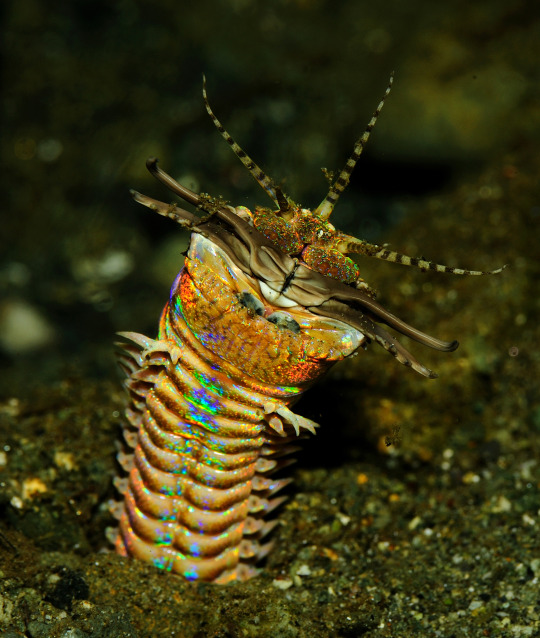
(image: a bobbit worm head with jaws extended)
Bobbit worms reproduce externally. At night, a female will emerge from her burrow and release pheromones that attract males. She will then release her eggs into the water. The males will follow by releasing sperm, allowing for fertilizations. The majority of larvae will die before reaching adulthood. There are rumors that females withh bite off the male's genitals to feed to her young, but this is not true. Bobbit worms can also reproduce asexually by splitting. When handles, a bobbit worm can split itself into multiple sections, each of which can grow into another identical worm. This is a common adaptation in polychaetes as it allows them to survive if a part of them is eaten.
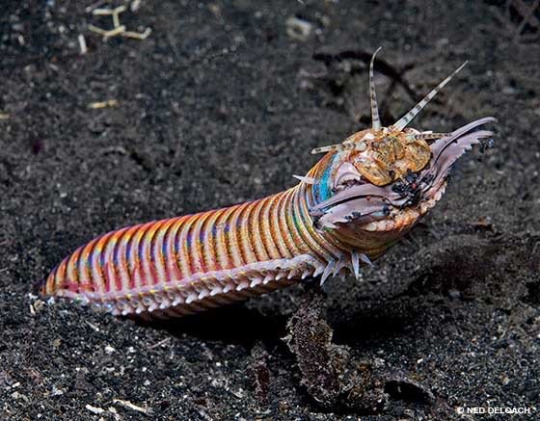
(image: a bobbit worm just sitting there, menacingly)
Bobbit worms have become a nuisance species in aquariums. They are usually introduced as tiny larvae clinging to rocks brought in for decoration or shelter. Once in an aquarium, the worms can grow rapidly and will eat any fish in the tank. Removing them can be very difficult due to their size, regenerative abilities, and reclusive nature. One famous case that introduced a lot of the internet to the worms was that of the Newquay aquarium in England. Aquarium staff were confused when a lot of the fish were vanishing from one tank and the coral was damaged. They tried laying traps, but the intruder ate the fishhooks they used and could bite through 20 lb fishing line. Finally, they lured it out with food, finding a 4 foot long bobbit worm that they named Barry. Barry became a hit online and was moved to his own tank. There apparently were plans to put him on exhibit, but I can't find confirmation that this ever happened. Given that this happened in 2009 and the bobbit worm lifespan is 3-5 years, I am sorry to tell you that Barry has passed away. RIP, king.
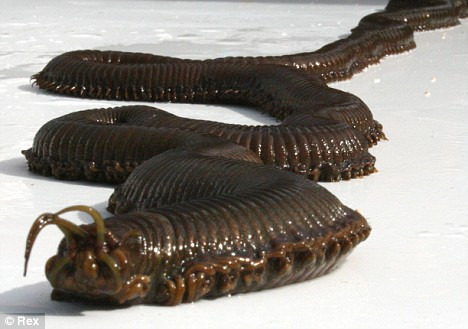
(image: Barry after being removed from the tank. His drab color is thought to be the result of poor nutrition)
Because of how reclusive they are, bobbit worms are an understudied species. Attempts to raise them in laboratories have mostly failed, so there is a lot we don't know about their reproduction, development, and behavior. We also don't know if they need any conservation efforts.
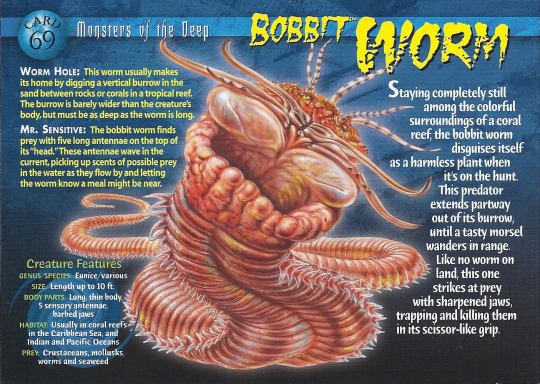
How many times in this series am I going to be able to use cards from this series? (image: the bobbit worm card from Weird n' Wild Creatures)
#wet beast wednesday#marine biology#biology#zoology#bobbit worm#animal facts#worm#annelids#polychaete#images#barry the bobbit worm#late again#forgot to prep a post
356 notes
·
View notes
Note
I just learnt about bobbit worms. And they're so pretty and cool looking! (I just wanted to share with someone who also appreciates bugs and stuff since the people around me think they look creepy)
They are very neat! And have a rather pretty iridescence. They're marine so I wouldn't really consider them a bug but let's admire one anyway for fun :)
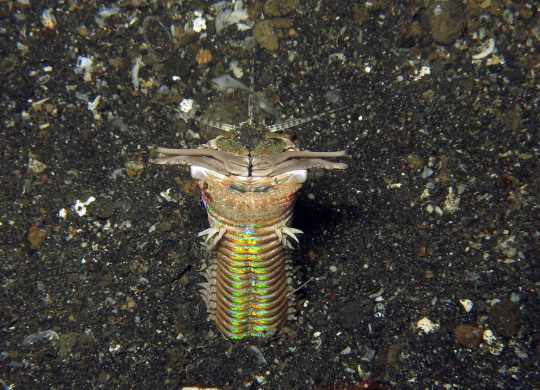
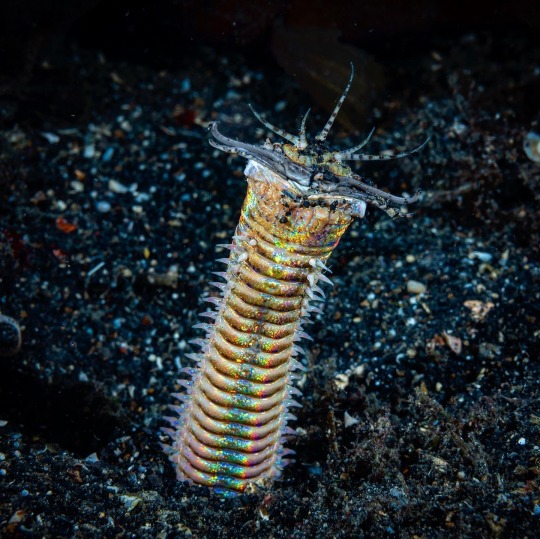
I love them :) Photos by slebris and francescoric
365 notes
·
View notes
Photo

By budak
200 notes
·
View notes
Text
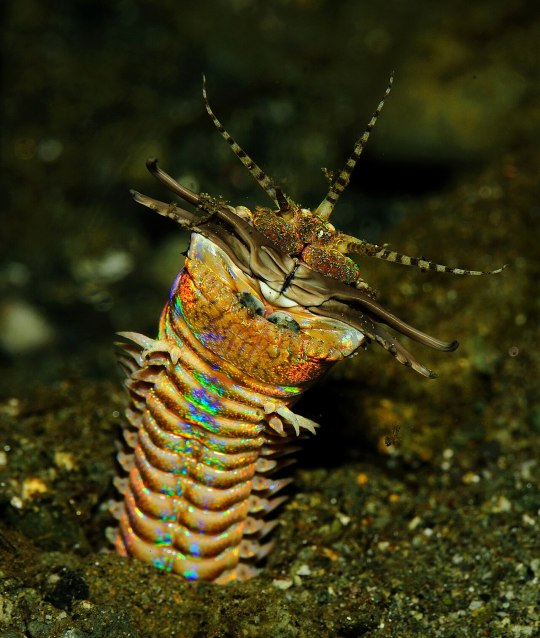
A burrowed Eunice aphroditois
35 notes
·
View notes
Text

Bobbit worm (Eunice aphroditois) by Sean Kearney
#marine biology#bristle worms#upload#rainbow#iridescent#creatures#Sean Kearney#bobbit worm#sea creatures#biology#sea life#ocean life#aquatic animals#sea animals#ocean animals#ocean biology#ocean creatures#exotic sea creatures#iridescent creatures#light#Eunice aphroditois#photography#underwater photography
148 notes
·
View notes
Text
WORM TIME!
WORM TIME!!! (images of the worms found below the poll)
WORM TIME!!!!!!!
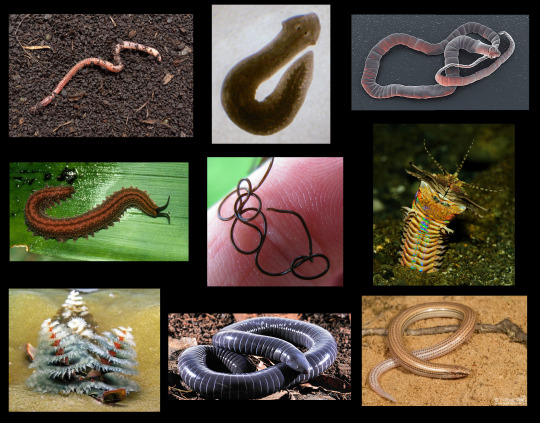
#worm time#flame polls#id in alt#poll#animals#earthworm#planarian#flatworm#tapeworm#velvet worm#horsehair worm#bobbit worm#christmas tree worm#caecelian#legless burrowing lizard
181 notes
·
View notes
Text

Its a worm
#gamdev#indiedev#indie games#psx#vhs#video games#horrorgame#ocean#thalassophobia#fullfathom#bobbit worm
89 notes
·
View notes
Text

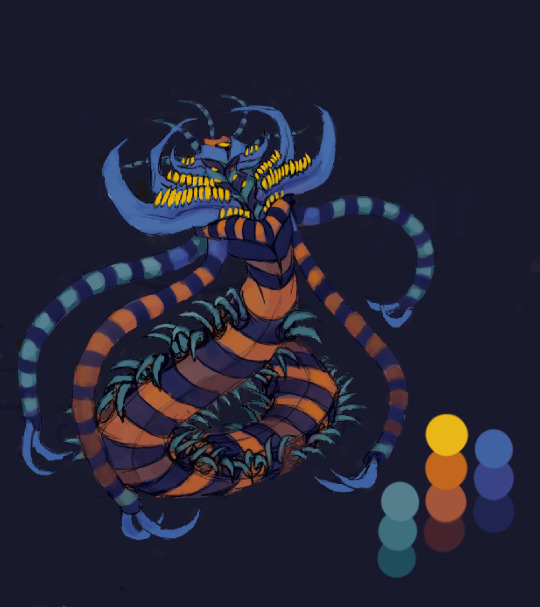
I've updated their designs and colors since we've last met... >3 >
#digital art#eldritch horror#horror oc#creature character#pastraspec#veldigun oc#vampire#bobbit worm
63 notes
·
View notes
Photo



Stop a Moment for the Sand Striker
Also known as the bobbit worm, Eunice aphroditois is a marine bristle worm endemic to both the Atlantic and Pacific oceans, in waters up to 95 m (311 ft) deep. Because they spend most of their time under ground, the sand striker is rarely seen. However, they can be found in both coral reefs and deeper, rocky or sandy ocean floors-- anywhere they can hide and ambush prey.
This species of bristle worm is famous for its hunting methods. Individuals live in burrows deep under ground, with an entrance covered by sand or rocks, and only emerge at night. They keep these burrows stable by secreting a mucus-like substance which coats the sandy walls and keeps them in place. Because their eyes are rudimentary at best, sand strikers use their five antennae to sense passing prey-- usually fish, but also algae or organic debris. When their target is close enough, E. aphroditois ambushes it and drags it back down into the burrow with its large mandibles. This process is extraordinarily fast; bobbit worms have been clocked moving at 6 m (20 ft) per second. The mandibles are also retractible, which helps the bobbit worm swallow its prey.
Though only their heads are usually visible, the sand striker has an impressive body. They can grow to be 1- 3 m (3-10 ft) long, although they’re typically only 25 mm (1 in) wide. Like other bristle worms, their bodies are made up of segments, protected by a hard, irridescent exoskeleton. Most sand strikers are deep purple or black, although individuals in a variety of colors have been documented. In addition to their exoskeleton, bobbit worms also sport sharp, venomous tentacles down the length of their body to deter threats. Adults are typically avoided by other, larger predators, but juveniles can be targeted by fish.
E. aphroditois lacks external reproductive organs, and instead is a broadcast spawner. When they’re ready to mate, female sand strikers produce a pheromone that attracts males and signals them to release their sperm. The females them release their eggs into the water, where they become fertilized and develop into larvae. These larvae swim freely for several months to a year, during which many become food for other animals. The survivors begin to segment and burrow into the sand, where they become sexually mature. In the wild, bobbit worms can live anywhere from 3-5 years, though some biologists believe they may have a longer lifespan of 10-15 years.
Conservation status: E. aphroditois has not been evaluated by the IUCN. However, populations in coral reefs are threatened by habitat decline.
If you like what I do, consider leaving a tip or buying me a ko-fi!
Photos
Richard Zerpe
Department of Biomedicine, University of Basel
Chutinun Mora
#bobbit worm#sand striker#Eunicida#Eunicidae#marine polychaetes#polychaete worms#bristle worms#worms#segmented worms#annelids#invertebrates#marine fauna#benthic fauna#coral reefs#atlantic ocean#Pacific Ocean#indian ocean#Indo-Pacific
154 notes
·
View notes
Text
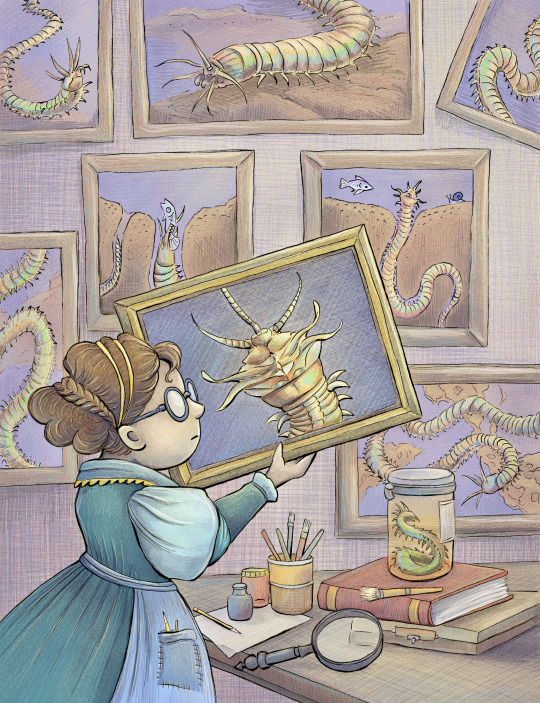
A painter preoccupied with bobbit worms.
29 notes
·
View notes
Text

been drawing some ballpoint sea creatures recently


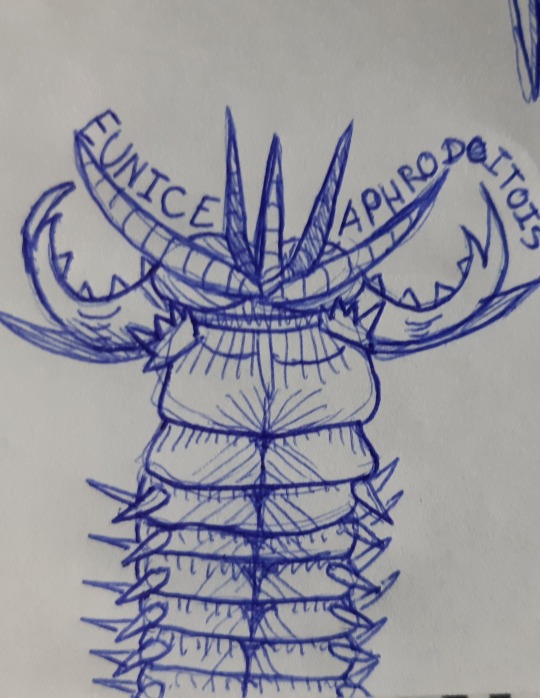

#paleo#i rly fucked up the ammonite but that's what i get for not using a reference or pens you can erase#anomalocaris#aquatic#sealife#clavain art#clavain draws#bobbit worm#ribbon eel
17 notes
·
View notes
Text
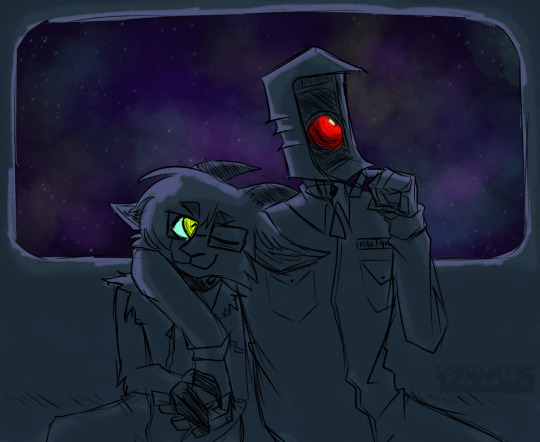
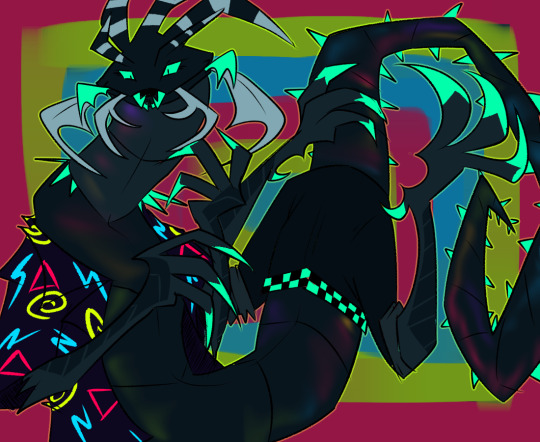

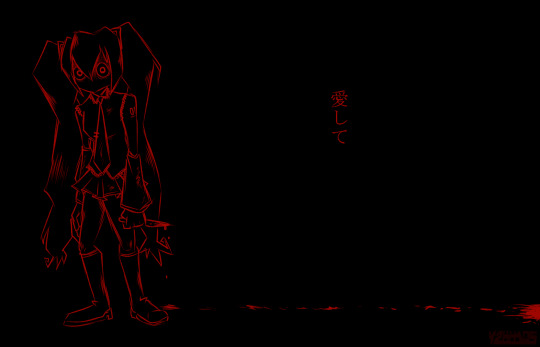

CRINGETOBER: DAYS 9-13
DAY 9: crossover ship (used this as an excuse to draw my sona and my version of hal.)
DAY 10: fursona (since i've already drawn my goat sona a lot, i went with the whole system's collective sona instead - chaos!!)
DAY 11: yandere
DAY 12: niche interest
DAY 13: creepypasta
#chaosart#cringetober#hal 9000#furry#fursona#goat#bobbit worm#hatsune miku#electric dreams#tails doll
27 notes
·
View notes
Photo

A new species of giant Eunice (Eunicidae, Polychaeta, Annelida) from the east coast of Australia
Joana Zanol, Pat Hutchings
Abstract
A new giant species is described from New South Wales, Australia. Eunice dharastii sp. nov. differs from described Australian species and is most similar to E. aphroditois (Pallas, 1788), E. flavopicta Izuka, 1912, and E. kinbergi Ehlers, 1868.
The unique combination of features that characterizes the new species is irregular articulated prostomial appendages; antennae reaching back beyond chaetiger 4; branchiae starting at chaetiger 10, initially button-shaped and distinctly longer than notopodial cirri where best developed; dorsal fleshy knobs on anterior chaetal lobes; notopodial cirri pendulous, abrupt tapering from inflated bases; bidentate compound falcigerous chaetae with both teeth directed laterally, distal tooth much shorter than proximal tooth in median and posterior chaetigers; and dark bidentate subacicular hooks starting at chaetiger 58, tapering to a small head with both teeth directed distally, and proximal tooth much larger than minute and spur-like distal tooth.
This new species lives in sandy sediments in coastal waters 1–8 m deep. It is highly mobile and not easy to collect, which may explain why it was not described before.
Read the paper here: https://zookeys.pensoft.net/article/86448/
156 notes
·
View notes